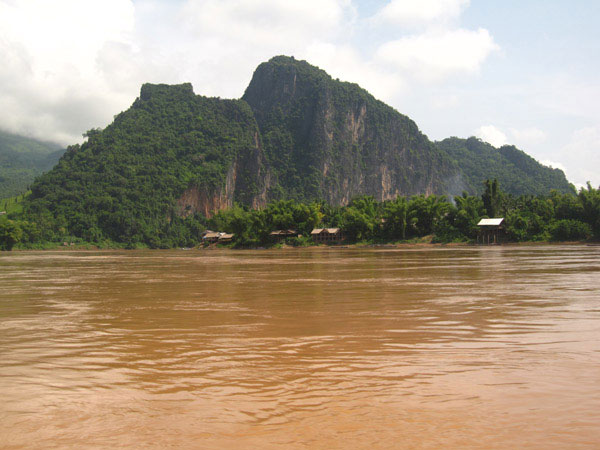Smashing the Mekong River
The proposed hydroelectric dams built on the mainstream downstream of the Mekong can destroy aquatic resources, taking away the nutrient resources of 60 million people in the region.
During the Global Water Week held in Stockhom, Sweden this week, the International Nature Conservation Fund (WWF) published the latest study on the impact of planned Mekong dams on countries. in the area.
The study explores the impact of 88 proposed dams on the Mekong on aquatic resources that give life to more than 60 million people, impacts on water and land resources as people depend on agriculture. to compensate for the loss of aquatic resources.
There are currently 11 proposed dam projects on the mainstream of the Mekong River and 77 other dam projects across the river basin by 2030.

A section of the Mekong River in Laos. (Photo: migrationology.com)
According to the WWF study, when all 11 mainstream dam projects were completed, fisheries resources would decrease by 16%, causing an estimated financial loss of nearly $ 500 million annually. If all 88 dams are built, the source of lost seafood could be 37.8%.
Stuart Orr, manager of the Freshwater Program of WWF International, said that policy makers often do not adequately assess the importance of domestic fisheries resources in ensuring food security.
'Mekong countries are pursuing economic development plans and they see opportunities for growth from hydroelectric dams. But first, countries need to fully understand and consider the economic and social values brought about by the free flow of the Mekong , " Stuart Orr said.
The study also explored the impact on land and water resources if people were forced to switch to livestock and poultry and other livelihoods to meet the necessary nutrient source.
In addition to 1,350km 2 of land lost due to construction of dams, countries will lose at least 4.863km 2 of land to make pastures for livestock to replace the lost nutrients from seafood. If all dams are built, the total area needed to mobilize is estimated at 24,188km 2 , of which 63% is for livestock.
"We hope the research helps complement some of the lack of information about the impact of dams," said Dr Jamie Pittock, Australian National University and co-author of the study.
WWF believes that countries downstream of the Mekong should delay dam construction within 10 years to have enough time to gather important data and the decision made will then be based on scientific evidence and Analytical basis. WWF recommends that the Lower Mekong countries should consider the construction of hydropower plants on river tributaries, which are more accessible and considered to have smaller impacts and less risk.
- New discovery of the process of forming the Mekong River
- Small dams threaten fish species on the Mekong River
- Reduce the environmental impact of the Mekong River
- Thailand studies a flow of a tributary of the Mekong
- More than 87.3 million USD to overcome the disaster of Mekong River
- 'Should postpone dam construction on the Mekong for 10 years'
- It is proposed to postpone the construction of a dam on the Mekong River
- Emergency news on the Mekong River
- No decision has been made on Lao hydroelectric dam
- Lessons from Thailand for dams on the Mekong River
- The US supported the postponement of the construction of the Lao hydroelectric dam
- Experts call on Laos to abandon the hydroelectric dam
 Vietnam 5th Asian champion on fuel-efficient vehicles
Vietnam 5th Asian champion on fuel-efficient vehicles We can read all NASA studies completely free of charge
We can read all NASA studies completely free of charge Singer and songwriter Bob Dylan won the 2016 Nobel Prize for Literature
Singer and songwriter Bob Dylan won the 2016 Nobel Prize for Literature Scientific revolution in Asia
Scientific revolution in Asia